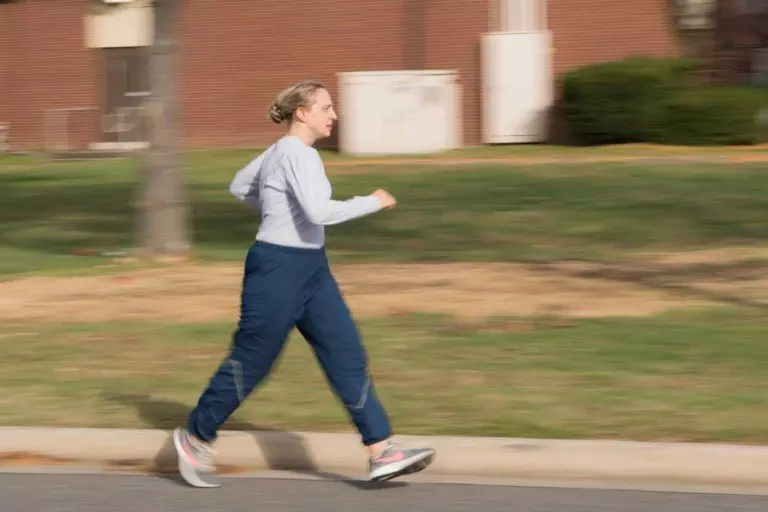
Shuffling gait means a walking pattern, in which a person drags his/her feet while walking. Shuffling gait is defined as a walking pattern in which thefoot is still moving when it hits the ground.
Some people call it “Festinating gait“. But, shuffling gait and Festinating gait are different.
Festinating gait is a walking pattern with rapid, small steps as if the person is going to fall over.
You can see a video of shuffling gait, and a video of festinating gait below.
The most common cause of both is Parkinson’s disease. But there are also other causes of shuffling gait such as hydrocephalus.
The treatment of shuffling gait depends on its cause.
Hello! I am Dr Siddharth Kharkar, a Neurologist in Thane, India and a Neurologist in Mumbai, India. I provide Parkinson’s treatment in India and am an Epilepsy specialist in India. I provide Epilepsy surgery in India at Mumbai & Parkinson’s surgery in India.
Let us learn more about these patterns of gait.
What is the meaning of Shuffling gait?
Table of Contents
ToggleLet us think about a fictional person, Sue. Sue has a normal gait.
Sue starts walking.
Sue first lifts one foot up. Then he moves that foot forward. After the foot is adequately in front, Sue stops moving it forward. She then places the foot down on the ground.
Sue can do this very rapidly, and walk very fast.

Usually, we walk like Sue. We do not shuffle.
==
Shuffling gait means a peculiar way of walking, in which the foot is still moving when it hits the ground.
Let us look at another person, Mary.
Mary does not lift the foot high off the ground. She moves it forward slowly. Even before he/she moves it forward adequately, it is time to put the foot down! And so she does so.
This causes Mary to shuffle while walking. This is the meaning of a “shuffling gait”.
See this sample video of bradykinesia posted by a Russian doctor on youtube:
Festinating gait verus Shuffling gait
Festinating gait and shuffling gait are slightly different terms.
Festinating gait happens when the person bends forwards while walking. Let us look at a third person – Michael.
Michael bends forwards at all times – sitting, standing & even while walking.
Now, Michael starts to walk. But he immediately feels like he will fall forwards on his face. He takes a quick short step forward to avoid falling. Saved!
But again, immediately, he again feels like he will fall forwards. So he takes another quick, short step. And so on…
This is called a Festinating gait.
Note that these movements are rapid. It is different than the slow shuffling gait seen in Parkinson’s disease.
You can see an example of Festinating gait in the video below (youtube – Ms. Kosutzka):
Thus, Festinating gait happens when the patient bends forward while walking. He/she then takes rapid, small steps while walking to avoid falling forwards.
Further reading:
- Gait festination in parkinsonism: introduction of two phenotypes – Jorik Nonnekes, Journal of Neurology 2019; 266(2): 426–430.
It is not essential to read this paper. This paper talks about the controversies regarding these two terms. It is fascinating, but is difficult to read for a non-medical audience.
Shuffling gait causes
The most common cause of shuffling gait is Parkinson’s disease.
In Parkinson’s disease, the patient becomes slow. So, the gait is a slow shuffling gait. Treatment can dramatically improve this slow shuffling.
Some other conditions can mimic shuffling gait.
If someone has very painful knee arthritis they cannot lift their feet high off the ground. Their gait may be mistaken for a shuffling gait.
| 5 causes of Shuffling gait that are not Parkinson’s disease |
|---|
|
Sometimes, the gait seen in these diseases is extremely difficultif not impossible to differentiate from the shuffling gait of Parkinson’s disease.
For example, here is a video posted by the hydrocephalus association of America.
This patient has Normal Pressure Hydrocephalus (NPH), and NOT Parkinson’s disease. As you can see, the gait looks very similar to Parkinson’s disease.
Thus, NPH can mimic Parkinson’s disease.
So, it is critical to look for other features of the “Parkinsonian gait” before making a diagnosis. For example, watch the video above again. Notice how there is no slowness of the upper part of the body.
Other features of the gait in Parkinson’s disease are described below.
What is Parkinson’s gait?
The term GAIT in medicine includes all body movements while walking.
In Parkinson’s changes in the movements of other body parts are also seen.
| Gait changes seen in Parkinson’s disease |
|---|
Once he or she starts walking:
|
You can notice these changes in the videos below. In the early stages of Parkinson’s, these changes may be very subtle. That is why it is so easy to miss the diagnosis of Parkinson’s disease.
Here is an excellent video demonstrating these symptoms. This video has been made by Lancet, a leading medical journal.
Treatment of shuffling gait of Parkinson’s
The treatment of shuffling gait depends on its cause.
The most common cause is Parkinson’s disease. In Parkinson’s disease, the brain has a deficiency of the chemical called Dopamine.
Levodopa is an oral medication. Once it goes to the brain, it gets converted into dopamine! This can result in rapid improvement in shuffling gait.
Treatment also improves slow shuffling gait, festination & other symptoms of Parkinson’s disease.
Shuffling gait and festinating gait is usually easy to treat. But “Freezing” may need extra treatment such as physiotherapy, visual cues and brain stimulants. These therapies are described in another article.
Treatment of other causes
Other reasons of shuffling gait respond also respond to treatment.
For example, the following therapies are effective:
| Disease | Treatment |
|---|---|
| 1. Hydrocephalus | Diverting water into the stomach using a pipe (called “Shunting”) |
| 2. Alzheimer’s | Possibly: Donepezil, brain stimulants and other medications |
| 3. Vascular disease | Same as Alzheimer’s |
| 4. Unsteadiness | Treating the cause of unsteadiness. For example – low vitamin B12 levels |
| 5. Parkinson’s Plus syndromes | Described in another article [Click here] |
Further reading:
- Normal Pressure Hydrocephalus – Meaning and treatment
This article is quite important. A variety of hydrocephalus (called Normal Pressure Hydrocephalus or NPH) can also produce a shuffling gait. Misdiagnosis is possible. NPH may be mistaken for Parkinsons disease. The treatment of NPH is shunt surgery, rather than medications.
Treatment of Festinating gait
Festinating gait is treated in the same way as shuffling gait of Parkinson’s disease.
The most important thing
Do not neglect a slow shuffling gait. Do not neglect a festinating gait.
And finally, do not neglect other conditions which may cause similar walking problems.
These conditions have effective treatments.
Do not be afraid. See a doctor early.
About the writer:
Dr Siddharth Kharkar is a Neurologist in Thane. He also works as a Neurologist in Mumbai at Nanavati Hospital.
Caution: This information is not a substitute for professional care. Do not change your medications/treatment without your doctor’s permission.
